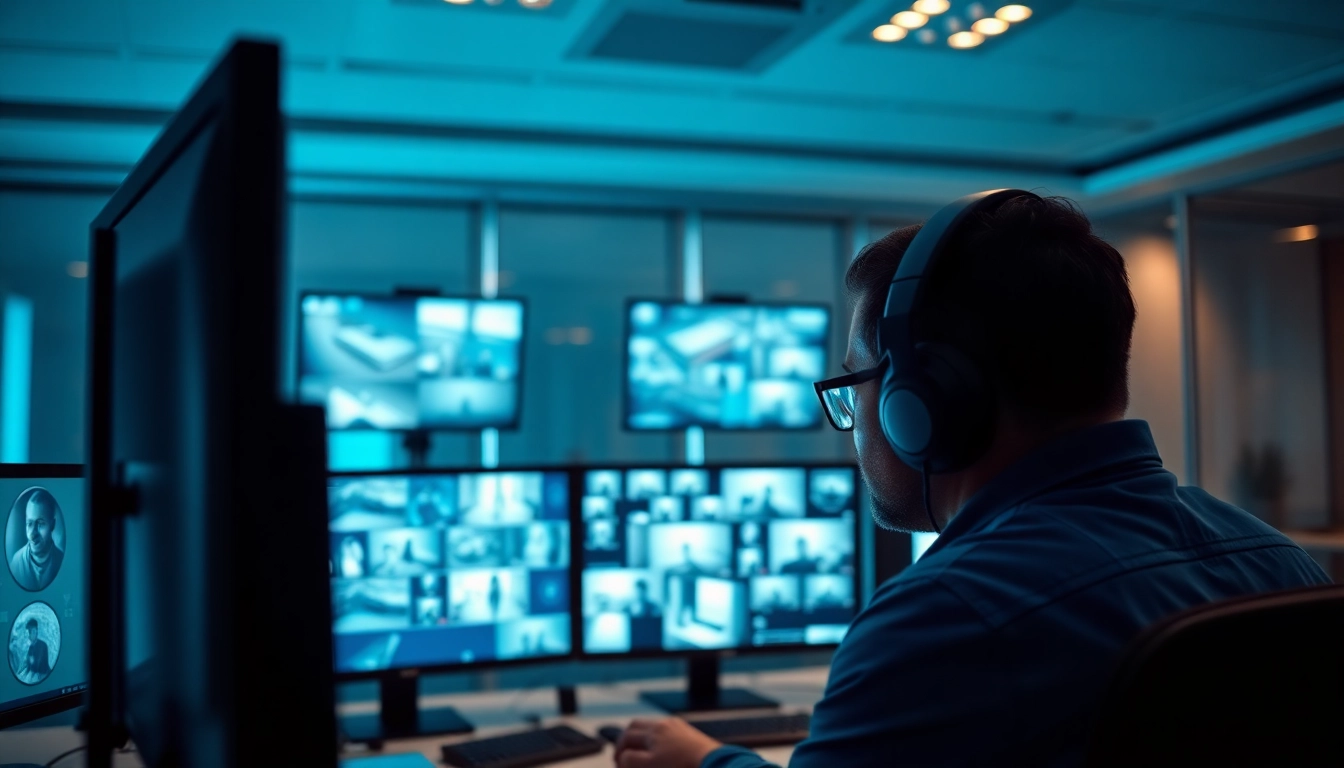Understanding CCTV & Remote Monitoring Systems
In an age where surveillance technology is advancing rapidly, understanding the essentials of CCTV & Remote Monitoring is critical. These systems combine high-definition video technology with innovative monitoring processes to enhance security solutions for both residential and commercial properties. By leveraging advanced capabilities, organizations can not only deter crime but also effectively respond to incidents in real-time.
What is CCTV & Remote Monitoring?
CCTV (Closed-Circuit Television) refers to the use of video cameras for surveillance purposes, transmitting signals to a specific, limited set of monitors. Remote monitoring takes this a step further, enabling real-time observation of surveillance data from any distance. Using internet connectivity, video feeds can be accessed remotely, allowing property owners or security personnel to maintain vigilance around the clock.
How Does CCTV & Remote Monitoring Work?
The functionality of CCTV & Remote Monitoring systems hinges on several elements: cameras, a recording device, and monitoring software. Initially, the cameras capture real-time footage, which is transmitted to a digital recorder or cloud storage. When integrated with remote monitoring solutions, this footage can be accessed via mobile devices or computers. Additionally, many systems employ advanced analytics software that alerts users to unusual activities, enabling timely responses.
Benefits of Implementing CCTV & Remote Monitoring Solutions
The advantages of adopting CCTV & Remote Monitoring in security infrastructure are vast, providing an array of benefits including:
- Deterrence of Crime: The visible presence of cameras often deters criminal activities.
- Real-time Monitoring: With remote access, users can watch their premises live, responding promptly to potential threats.
- Evidence Collection: Recorded footage can be crucial in investigations and legal proceedings.
- Insurance Benefits: Many insurance companies offer reduced rates for properties equipped with CCTV and remote monitoring systems.
- Improved Operational Efficiency: Businesses can monitor employee activities and operational efficiency.
Key Components of Effective CCTV & Remote Monitoring
Important Technical Specifications
For an effective CCTV & Remote Monitoring system, understanding technical specifications is vital. Key specifications include:
- Camera Resolution: The higher the resolution, the clearer the footage (e.g., 1080p, 4K).
- Field of View: The range a camera can capture; wider fields reduce the number of cameras needed.
- Frame Rate: Measured in frames per second (FPS), higher rates produce smoother videos.
- Night Vision: Infrared capabilities enhance nighttime surveillance.
- Storage Options: Cloud storage offers scalability, while local storage requires physical space.
Types of Cameras Used in CCTV & Remote Monitoring
Various camera types are utilized in CCTV & Remote Monitoring, including:
- Dome Cameras: Known for their aesthetically pleasing design and versatility, they are often used in retail environments.
- Bullet Cameras: These are suitable for longer distances due to their enhanced zoom capabilities.
- PTZ Cameras (Pan-Tilt-Zoom): Ideal for larger areas, allowing operators to control the direction and zoom functionality remotely.
- IP Cameras: Internet Protocol cameras transmit data over the internet, providing high-quality resolution and remote access.
- Thermal Cameras: These detect heat signatures, making them useful in low-visibility situations.
Importance of Storage and Data Management
Choosing the right storage solution is critical for managing a CCTV & Remote Monitoring system. Storage options typically include:
- On-site Storage: Local hard drives or Network Attached Storage (NAS) allow quick access to footage but need regular maintenance.
- Cloud Storage: Offers scalable options, ensuring data safety while enabling access from various devices and locations.
- Hybrid Solutions: Combining local and cloud storage can provide the best of both worlds regarding accessibility and security.
Best Practices for Implementing CCTV & Remote Monitoring
Designing an Effective Security Layout
A well-planned security layout is essential for effective coverage. Considerations should include placement of cameras, the angles of coverage, lighting conditions, and areas needing enhanced monitoring. Key steps for designing a layout include:
- Identify vulnerable areas on the property.
- Overlapping camera views to prevent blind spots.
- Consider environmental factors such as lighting and possible obstructions.
- Plan for future expansion as needs may change.
Ensuring Compliance with Legal Regulations
Implementing a CCTV & Remote Monitoring system requires adherence to various legal considerations, including privacy laws and data protection regulations. Steps for compliance include:
- Understand local laws regarding surveillance in both public and private spaces.
- Publicly display notices informing individuals they are being recorded.
- Establish clear policies around data access, storage duration, and retention policies to protect privacy.
Integrating Remote Monitoring with Other Security Measures
To enhance security, integrate CCTV & Remote Monitoring with other security measures, such as:
- Alarm Systems: Connecting your cameras to alarms ensures immediate responses to incidents.
- Access Control Systems: Enhances security at entry points by monitoring who enters and exits.
- Mobile Alerts: Enable notifications for unusual activities detected by your monitoring system.
Challenges in CCTV & Remote Monitoring
Addressing Privacy Concerns
Privacy concerns are paramount when implementing CCTV & Remote Monitoring systems. Ensure transparency with the public by clearly communicating the purpose of surveillance. Mitigating privacy risks involves:
- Limiting camera placement to critical areas only.
- Conducting regular audits to ensure compliance with privacy policies.
- Creating a reporting mechanism for individuals to voice concerns.
Troubleshooting Common Technical Issues
Technical issues can undermine the effectiveness of a CCTV & Remote Monitoring system. Common problems include:
- Connection Problems: Ensure stable internet connections, regularly checking for disconnections.
- Power Outages: Use uninterrupted power supplies (UPS) to maintain system operation during outages.
- Camera Malfunctions: Regular maintenance checks and prompt replacement of faulty cameras are critical.
Managing System Vulnerabilities and Fortifying Security
Technological advancements also mean increasing vulnerabilities. To manage and fortify CCTV & Remote Monitoring systems, consider:
- Regularly updating software and firmware to patch vulnerabilities.
- Utilizing strong passwords and multi-factor authentication for remote access.
- Conducting penetrating testing to assess system weaknesses.
Measuring the Effectiveness of CCTV & Remote Monitoring
Setting Performance Metrics and KPIs
To determine the effectiveness of CCTV & Remote Monitoring systems, establishing performance metrics and key performance indicators (KPIs) is necessary. Metrics can include:
- Incident response times.
- Number of incidents captured on camera.
- Feedback from law enforcement regarding evidence quality.
Analyzing Incident Reports and Response Times
Implement a process for analyzing incident reports to identify patterns or repeated issues that may require attention. Additionally, response times should be monitored to ensure prompt actions are taken in the event of a security breach. This analysis can inform necessary adjustments to improve overall security.
Continuous Improvement and Upgrading Technology
The effectiveness of a CCTV & Remote Monitoring system is not static. Ensure continuous improvement by regularly evaluating performance data, seeking user feedback, and staying abreast of advances in technology. Periodic upgrades to hardware or software can significantly enhance system capabilities, keeping security measures relevant and effective.



